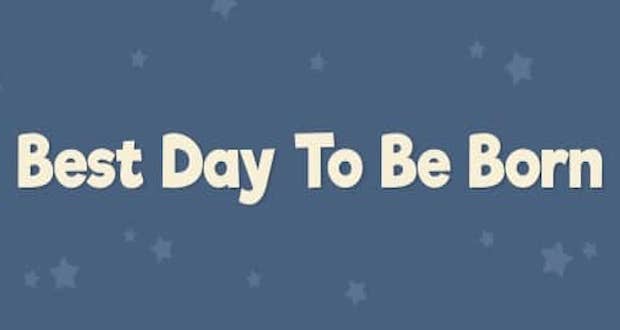How To Be Financially Prepared To Buy Your First Home
While the idea of buying your first home sounds exciting, many people also see it as a physically exhausting chore. Not to mention, it can also be emotionally draining at the same time. It’s crucial to be prepared for the most significant purchases of your life in terms of physical, emotional, and, most notably, financial readiness.
There are a lot of things to consider, such as the down payments, one’s credit scores, and also the mortgages too! To make things easier for you, here’s a step-by-step guide on how to be financially prepared to buy your first home.
There’s no denying that obtaining a house can be quite stressful. However, if you’re equipped with the right information, you can easily look around for the home of your dreams, apply for a mortgage and be able to close the deal confidently.
Step 1: How Much Are You Willing To Spend On Your House?
The first step and the most essential part of the process is determining whether you’re financially able to do so. There’s a right time for everything. Do you think this is the right time for you to finally make your first house purchase?
In general, if you’re planning on staying there for at least five years, then buying would be an excellent option for you as this will help you pay it off. If less, renting isn’t a bad idea after all.
You can check some rent vs. buy calculators online. While the values may vary depending on your lifestyle and where you live, go ahead and play along with these calculators to see whether buying is a great option for you at this moment.
Many people may disagree with this, but we believe buying your first house shouldn’t be considered an investment piece. It’s true your property’s value will appreciate in time, but your primary purpose for buying should be because you want and need a home, not because you want an investment.
For some people, if you’re used to renting and living in an expensive real estate market, there might be some adjustments you need to make. We strongly suggest you limit your total housing payment to not more than 30% of your gross monthly income.
While some may say they can get by even if they spend more than 30%, there’s a higher chance you’ll fall under the category many people define as “house poor.” These are the people who are living in a beautiful and large house but are struggling with the rest of their monthly expenses, or those without a single dime in their savings or emergency funds.
Step 2: Getting Your Finances Ready In Preparation For The Mortgage Process
You don’t want to go through the hassle of finding the perfect dream house only to find out you can’t afford it. To save you from the heartbreaks, you have to make sure you’re financially capable of it. You’ll need a good credit score, enough cash to close the deal, and lastly, a verifiable income.
Verify Your Credit Score
Source: Pexels
Most of us know, to get approved for mortgage loans in Texas, we need to have a good credit score. Now is the perfect time to verify and look at your credit errors. This is to verify you have a good credit standing, and at the same time, this allows you to check for errors or discrepancies.
One way to quickly improve your credit score is by making sure you pay off all of your credit card balances and refrain from using your card two months before a mortgage application. Additionally, you’d also want to refrain from applying for new credit applications, such as a car loan or getting a new credit card, until you’ve successfully closed the deal on your new house.
You Need To Have Available Cash On Hand
Aside from ensuring you have a good credit standing, you also want to take into consideration you’ll need cash to make this dream into a reality. This will be used for your down payment, so it’s safe to have around 3.5% to 20% of the total amount of the house’s price.
While you’re currently saving money for your new home’s down payment, try and avoid making investments in high-risk stock markets using the money you would use for your house’s down payment. Some people are tempted to use their saved money and invest it in stock markets, hoping it’ll give them bigger yields.
You don’t want to take that risk. Playing safe and making sure the cash is readily available when you need it should be your top priority.
Prepare Those Documents
Source: Pexels
We’re almost there! The next step would be collecting the required documents you need to verify your finances and source of income. This is very important when applying for a mortgage.
Documents may include bank statements and W-2’s. If you’re a freelancer or a self-employed individual, prepare copies of at least the last two tax returns.
Step 3: Look For Mortgage
The majority of individuals who are buying a home often leave this step up to the last minute. You don’t want to do this as you might risk your dream home being purchased by another bidder.
Get your mortgage pre-approved as this doesn’t come with a contract or any additional fee. Doing this will also present you as a serious and qualified buyer, looking to buy their dream home.
Two Different Types of Mortgage
There are two basic mortgage types, and if you’re new to this, this can become quite confusing at first. One type would be the adjustable-rate mortgage or ARM, and the other one is the fixed-rate mortgage.
They are usually priced differently. Some mortgages can be paid between 5 to 30 years, and the interest rates usually go higher the longer the loan term is.
Our suggestion would be for you to consider fixed-rate mortgages. This way, you don’t have to worry about increasing interest rates. The most common type of loan is the 30-year mortgage with a fixed-rate, making it a bit easier on everyone’s pockets.
If you’re still not familiar with how these works, there’s still time for you to do some reading and find out which mortgage type suits you best.
Mortgage Fees
Besides the interest rates, it is also important you’re aware mortgage lenders also charge other fees. These fees may be related to a home appraisal, checking your credit score as well as document preparation.
In some cases, mortgage lenders would offer you pay “points” by the time you close the deal for a smaller interest rate. In simpler terms, points are what they refer to the interest that has been paid in advance.
This is up to you given the fact you have the extra cash to pay for those points, and at the same time, you should prepare to pay for the mortgage for many years.
PMI or Private Mortgage Insurance
The down payment is usually 30% of the purchase price – and if you’ve put down 20%, the mortgage lender will most likely add something to your monthly cost which will cover your private mortgage insurance.
This is their way of protecting themselves if your home’s value significantly declines, or if ever you’ve decided to default on your mortgage.
How To Get Pre-Approved And What Are The Mortgage Rates
The simplest way to get a mortgage is to visit your bank and look for a loan officer. This way, you don’t have to go through the stress of looking around for mortgage companies.
By doing so, you can easily compare rates based on the list your loan officer will provide you, or you can communicate with a local mortgage broker who will do the shopping on your behalf.
We highly recommend using Texas Mortgage Pro. An online website that provides you with four to five various mortgage rates from multiple banks. Most often, these rates are more accurate as compared to those posted in print ads and online banners.
This rate will be based on your credit profile as well as the home’s location and value. If you want to check the current mortgage rates and the pre-approval form, visit Texas Mortgage Pros.
As mentioned earlier, there’s nothing more exciting than buying your first home, but it also comes with a lot of steps and you need to be financially prepared before you start looking.
Prepare your finances and don’t hesitate to use online tools for mortgage rates comparison and for managing your credit score. Take a look at some other considerations when buying a home.








